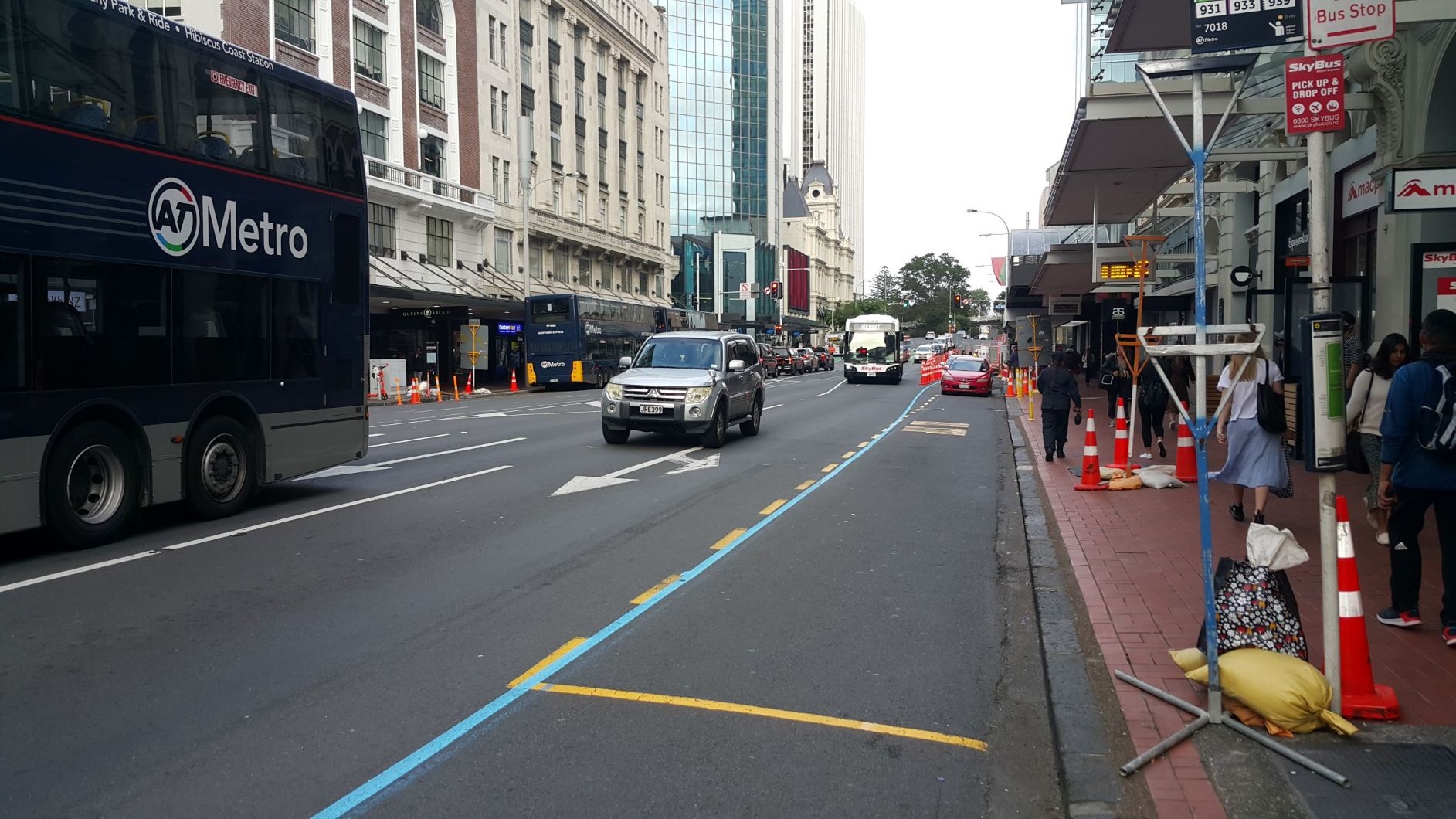The Ministry of Transport, in conjunction with Auckland Transport, the New Zealand Transport Agency, Auckland Council, Treasury and the State Services Commission have recently released a report on congestion charging in Auckland (available here). This article represents the initial thoughts of a Campaign for Better Transport committee member and aren’t necessarily representative of the CBT’s final view.
Proposal
The key elements of the congestion charge proposal suggested in the report are as follows:
- Implement an Auckland CBD cordon charge along with a short distance along the Strategic Corridors heading out of the Auckland CBD by 2025.
- Expand the charge to include the Strategic Corridors to Albany, the Southern Motorway inside the Auckland Isthmus and Pakuranga Highway to Ti Rakau Drive to Botany by 2028.
- Expand the charge to include the Strategic Corridors to Westgate and Papakura post 2028.
It is proposed the congestion charges would be introduced in conjunction with the opening of key public transport improvements such as the City Rail Link.
Congestion Charging
The theory behind congestion charging is that a motorist would pay a congestion charge for travelling into a certain area or along a certain corridor, either throughout the day or during certain times of day. It is hoped that it would discourage motor travel into certain areas or during certain times of the day through the imposition of the charge.
One of the big issues until recent times has been for the driver of high levels of demand to be set by a party other than the transport user. Until 2020, most employers (and certainly larger employers) had generally required their employees to be present at an office during set business hours. Therefore, no matter how much effort was put into “managing” demand, most transport users had no choice but to travel during the morning and afternoon peak as this was dictated to them by their employers. This has of course changed during the present pandemic.
Public Transport
The report admits that even with significant public transport investment, the level of motor vehicle traffic on the road will increase in the coming decades by around 50%. There seems to be a view prevalent that public transport investment is never going to be enough to bust congestion and that at best it provides an alternative to users.
Yet, it could be argued that public transport has never been sufficiently developed to act as a “congestion buster”. A 2019 New Zealand Herald article (link) outlined the driving trip times in the morning peak for four different trips. These trips and their times were:
Westgate to Auckland 26 minutes
Albany to Auckland 31 minutes
Airport to Auckland 24 minutes
Papakura to Auckland 42 minutes
A little further digging shows that the trip times taken using the public transport alternatives are as follows:
Westgate to Auckland (Route 125X) 55 minutes
Albany to Auckland (Route NX1) 34 minutes
Airport to Auckland (Route 380, then Southern Line) 51 minutes
Papakura to Auckland (Southern Line) 50 minutes
The only sectors where public transport came close to competing with private vehicles, in congested conditions, were on the Papakura to Auckland and Albany to Auckland sectors. This is undoubtedly because in both instances, the public transport alternative was largely/entirely in its own corridor and did not need to mix with traffic to any significant extent. In saying that, it is shocking that even with its own corridor, the public transport options were slower than driving – in morning peak traffic!
While improvements are planned to both the Airport to Auckland and Westgate to Auckland, these improvements are unlikely to make public transport time competitive with driving – in congested conditions!
It might be worthwhile for reasonable efforts to be made to make public transport time competitive with driving before implementing congestion charges. In the case of Papakura to Auckland, it should be possible to reduce trip times – after all, the old diesel units managed to achieve 47 minutes on that run in the 2004 timetable (link) and this included stops at Wiri and Mangere, both now closed. There appears to be limited appetite to investigate ways of making public transport trips time competitive with driving.
Conclusion
While congestion charging might be worth considering, it might be a little too early to look at implementing it – certainly more work needs to be done to make public transport time competitive with driving; definitely during the peak and maybe with a little ambition even during the off peak.
In addition, we need to see whether the current trend for employers to encourage working from home and other flexible working arrangements will continue once the current pandemic is over. If this trend continues, then it might be possible that congestion charges are not needed.
